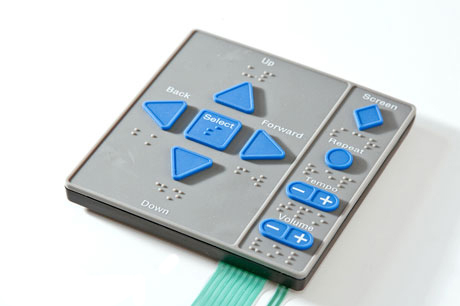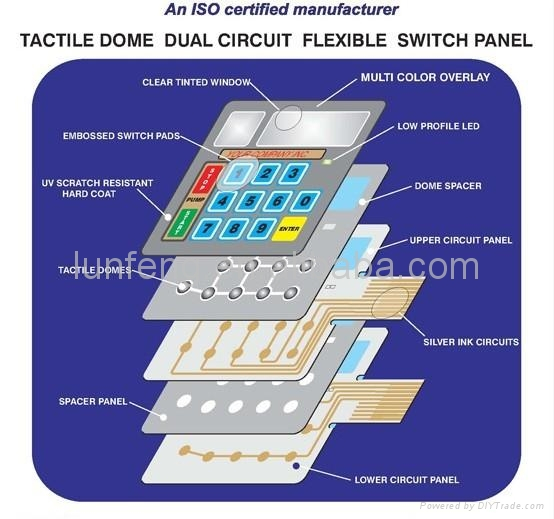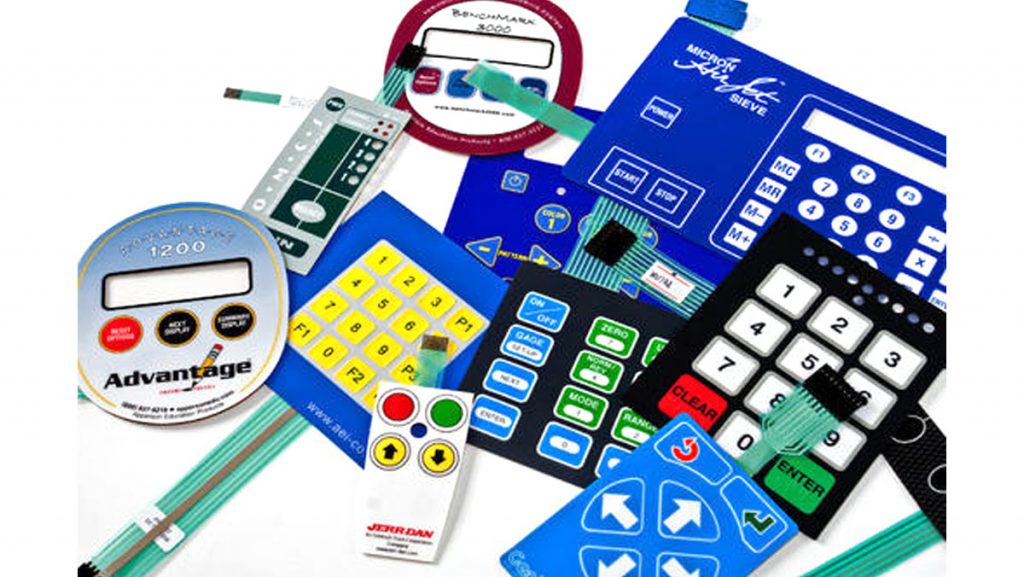Recognizing the Significance of Membrane Switches in Interface
Membrane buttons are essential parts in the style of reliable interface, promoting not only performance yet additionally boosting visual appeal and user communication. Their special features, such as resistance to ecological elements and personalized styles, make them ideal for a diverse selection of applications across numerous sectors. As we check out the numerous advantages and future fads related to Membrane technology, it ends up being clear that these buttons are much more than simply components; they represent a merging of innovation and functionality. The effects of this technology on individual experience are worth taking a look at further.
What Are Membrane Buttons?

The spacer layer, which consists of sticky residential properties, permits for the splitting up of the circuit layer from the overlay, making sure that the switch remains in a non-activated state until pushed. When stress is applied to the overlay, it compresses the spacer layer, linking the void and finishing the circuit in the underlying layer. This design not only lowers the physical room required for conventional mechanical switches yet likewise enhances the durability of the tool, as Membrane buttons are usually immune to dust, dampness, and various other environmental variables.
Generally discovered in applications ranging from customer electronic devices to clinical devices, Membrane switches are integral to contemporary technology, giving a effective and user-friendly interface that straightens with contemporary layout demands.
Benefits of Membrane Buttons
While various button innovations exist, Membrane Switches deal distinct advantages that make them specifically desirable in numerous applications. One of the key benefits of Membrane buttons is their compact style, which allows for space-saving applications in devices where property is restricted. Their thin profile not just enhances visual allure yet likewise promotes lightweight building and construction.
Another considerable benefit is their resistance to environmental elements. Membrane buttons are generally sealed versus dampness, dust, and pollutants, making them ideal for use popular settings, such as clinical devices and commercial tools. This resilience prolongs the life-span of the button, reducing maintenance expenses and improving integrity.
Moreover, Membrane buttons can be customized to meet particular style needs, including unique graphics and colors that enhance user interaction. Their tactile responses alternatives can also be tailored to provide a rewarding individual experience. Furthermore, Membrane switches are affordable, especially in high-volume applications, as they can be created successfully.
Applications in Various Industries

In the consumer electronics field, Membrane switches prevail in gadgets such as microwaves, washing equipments, and push-button controls. Their tactile responses and visual options boost individual experience while providing a streamlined, contemporary appearance. Furthermore, automotive suppliers use Membrane switches in dashboard controls and infotainment systems, where room is limited, and customer engagement is essential.
Additionally, the industrial market leverages Membrane switches in control panels for equipment and devices, permitting for instinctive operation in usually severe settings. Their resistance to chemicals and wetness makes certain longevity and integrity in these applications. Overall, the versatility of Membrane Switches contributes significantly to their prevalent usage, making them important in numerous technological domains.
Layout Considerations for Membrane Buttons

When designing Membrane switches, a number of vital considerations need to be taken right into account to ensure optimal performance and individual experience. To start with, the selection of products is crucial; choosing long lasting, high-grade substratums can boost the switch's longevity and resistance to environmental elements such as wetness and temperature changes.
Secondly, the design of the visuals overlay need to focus on clearness and simplicity of use. Symbols and text should be clear, and the layout should facilitate instinctive communication (membrane switches). Furthermore, tactile feedback is essential; incorporating a responsive dome or various other mechanisms can improve the individual experience by providing physical verification of activation
One more vital aspect is the switch's electrical efficiency. Designers must ensure that the conductive traces are appropriately developed to decrease resistance and prevent signal interference. This involves examining the called for actuation force and guaranteeing compatibility with the electronic elements they will certainly interface with.

Future Patterns in Membrane Technology
As modern technology continues to breakthrough, Membrane buttons are poised to advance substantially, driven by innovations in products and manufacturing methods. One arising trend is the unification of advanced products, such as adaptable substrates and conductive inks, which improve durability and decrease the total weight of Membrane switches. These products not just improve the responsive feedback but likewise permit for the design of switches that can hold up against harsher environmental conditions.
Moreover, the assimilation of touch-sensitive technologies is transforming standard Membrane Switches into more interactive individual interfaces. Capacitive touch sensing units installed within Membrane button panels can provide a much more intuitive and responsive customer experience, aligning with the growing demand for smooth, modern-day layouts in customer electronic devices.
Additionally, advancements in printing methods, such as digital and 3D printing, allow fast prototyping and personalization of Membrane buttons. This versatility permits suppliers to react more quickly to market demands and customer choices.
Last but not least, sustainability Discover More Here is coming to be a significant emphasis, with suppliers discovering eco-friendly materials and procedures. As these patterns unravel, the future of Membrane innovation promises enhanced functionality, visual allure, and ecological obligation, solidifying their role in advanced customer interfaces throughout different markets.
Conclusion
Finally, Membrane Switches represent a vital part in the layout of interface, integrating functionality with visual adaptability. Their advantages, including durability and resistance to ecological aspects, make them suitable for varied applications throughout various sectors. In addition, thoughtful style considerations boost individual interaction and experience. As innovations in innovation continue, the advancement of Membrane buttons is expected to more refine interface, driving advancement and improving use in an increasingly intricate technological landscape.
Membrane switches are indispensable components in the style of reliable user interfaces, assisting in not just functionality however additionally enhancing aesthetic charm and customer communication.Membrane Switches offer as an important element in numerous user interfaces, helping with a smooth communication in between users and electronic gadgets.While many button technologies exist, Membrane Switches deal distinctive benefits that make them particularly desirable in different Learn More Here applications.Additionally, Membrane buttons can be tailored to fulfill specific design requirements, integrating special graphics and shades that improve customer Homepage communication.In verdict, Membrane Switches stand for an essential part in the layout of customer interfaces, incorporating capability with visual adaptability.